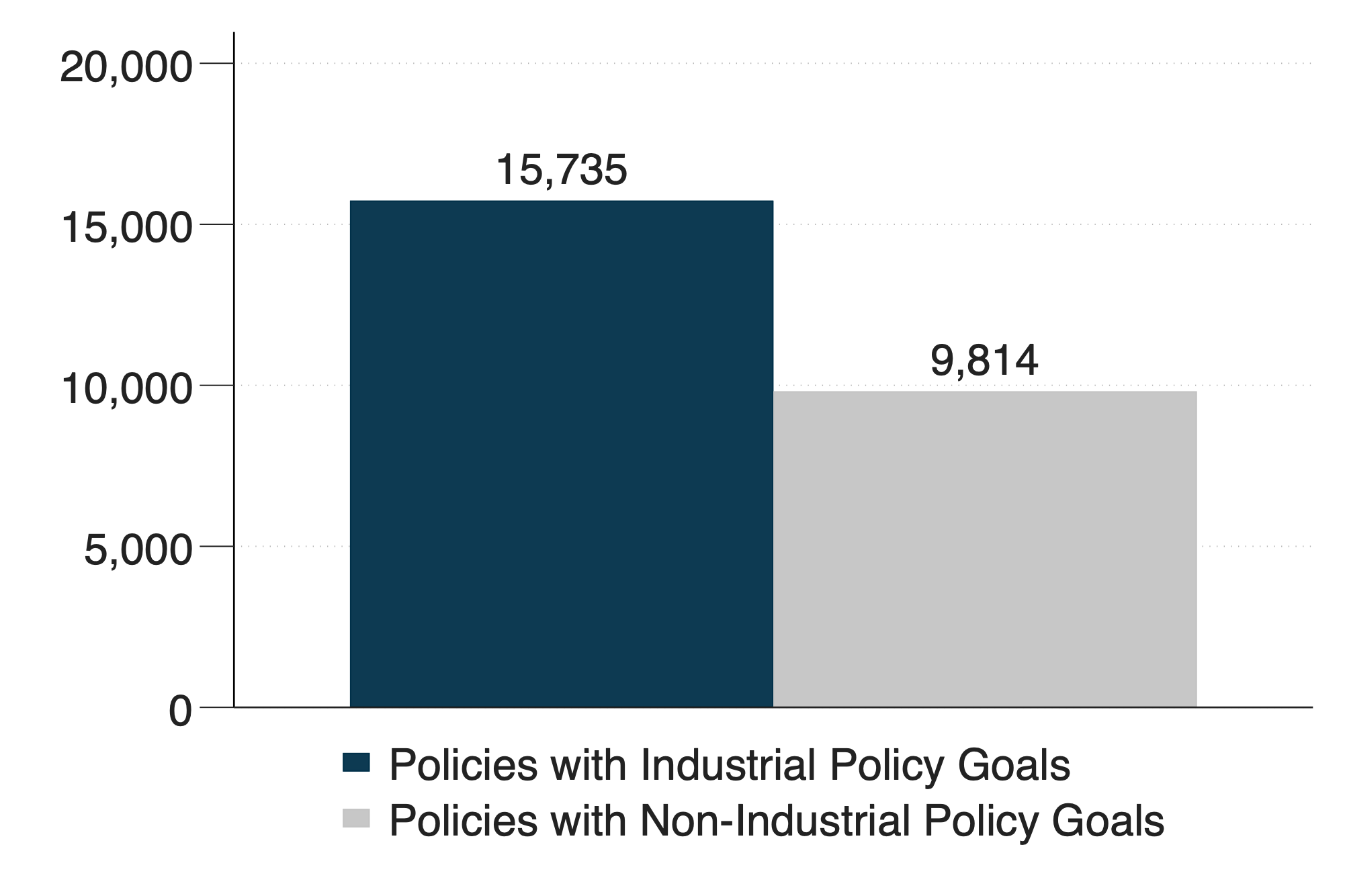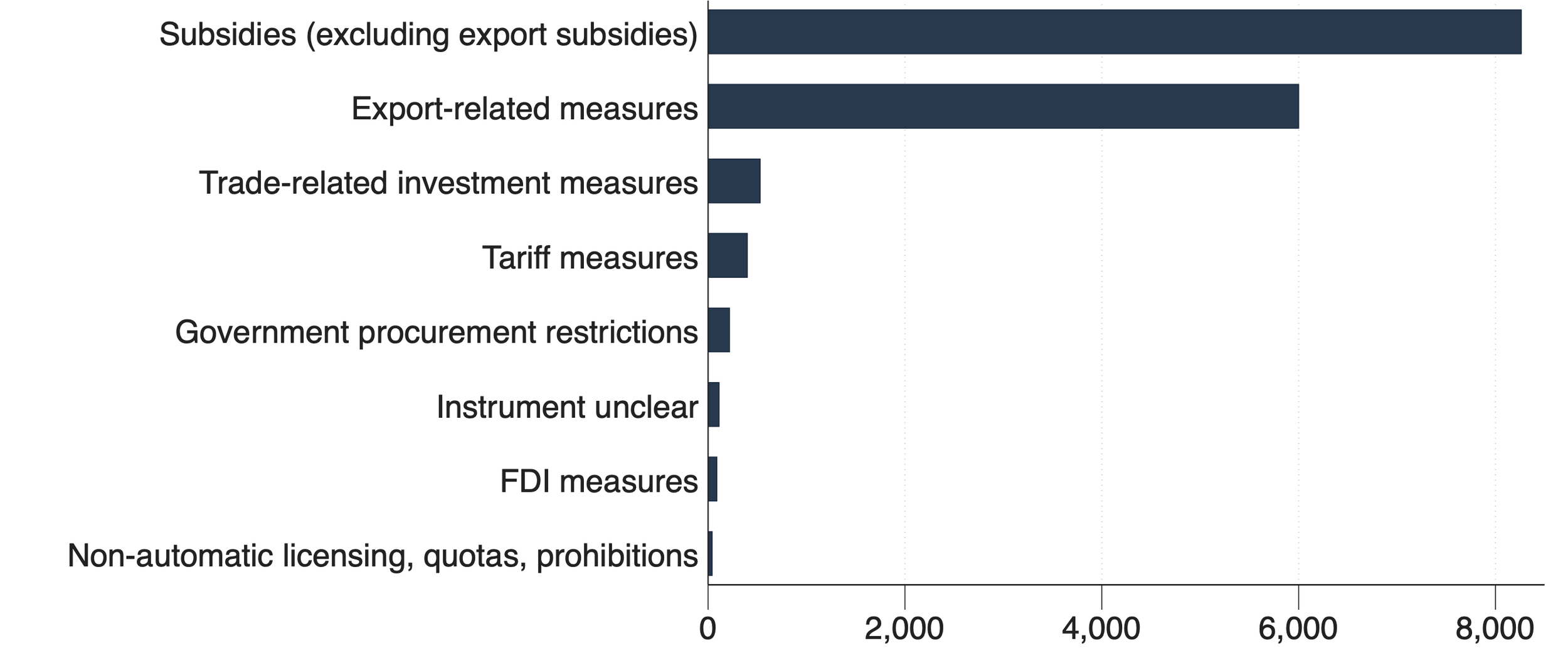Working Paper
Measuring Industrial Policy:
A Text-Based Approach
By Réka Juhász, Nathan Lane, Emily Oehlsen, Verónica C. Pérez (2025)
Download the paper on NBER or Open Access on SocArxiv, or SSRN
Figure 1. Model Classification
Figure 2. Time Trend of Industrial Policy
Figure 3. The Instruments of Industrial Policy
Overview
We develop a text-based approach to industrial policy (IP). We train and validate a Large Language Model (LLM), more specifically, BERT, to identify industrial policies based on information contained in policy text. We apply our methodology to a global database of commercial policy descriptions and provide a first look at IP use at the country, industry, and year levels (2010-2022).
Our data suggests that industrial policy:
is important and is on the rise.
uses subsidies and export promotion measures as opposed to tariffs.
used heavily by high-income economies.
tends to target sectors with an established comparative advantage, particularly in high-income countries.
We present here the key takeaways from our working paper, along with the data behind each figure.
You can read the full Working Paper here, and access our main dataset here. Our Industrial Policy Codebook is here.
Reference
Juhász, Réka and Lane, Nathaniel and Oehlsen, Emily and Pérez, Verónica C., Measuring Industrial Policy: A Text-Based Approach (2025). DOI:10.3386/w33895
@techreport{NBERw33895,
title = "Measuring Industrial Policy: A Text-Based Approach",
author = "Juhász, Réka and Lane, Nathan J and Oehlsen, Emily and Perez, Veronica C",
institution = "National Bureau of Economic Research",
type = "Working Paper",
series = "Working Paper Series",
number = "33895",
year = "2025",
month = "June",
doi = {10.3386/w33895},
URL = "http://www.nber.org/papers/w33895",
}
Ackowledgements
We gratefully acknowledge the use of the Global Trade Alert (GTA) dataset, which the GTA team kindly shared with us. We are particularly thankful to Johannes Fritz for helpful discussions about the GTA project. We would like to thank the Alfred P. Sloan Foundation and STEG/CEPR for their financial support.
License
Creative Commons Attribution-NonCommercial-ShareAlike 4.0 International CC BY-NC-SA 4.0
Unless otherwise noted, all content on this website, including the data, is licensed under a Creative Commons Attribution-NonCommercial-ShareAlike 4.0 International License. You are free to:
Share — copy and redistribute the material in any medium or format
Adapt — remix, transform, and build upon the material
Under the following terms:
Attribution — You must give appropriate credit, provide a link to the license, and indicate if changes were made.
NonCommercial — You may not use the material for commercial purposes.
ShareAlike — If you remix, transform, or build upon the material, you must distribute your contributions under the same license as the original.
Dr. Réka Juhász and Dr. Nathan Lane thank the Alfred P. Sloan Foundation for funding this empirical work.




